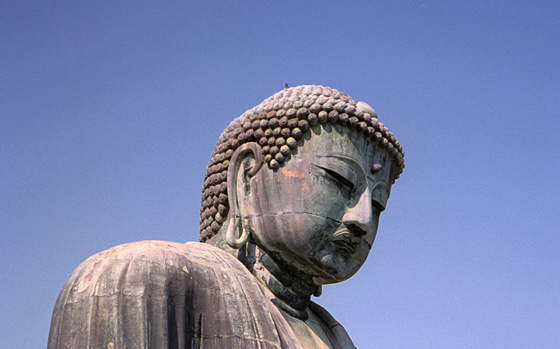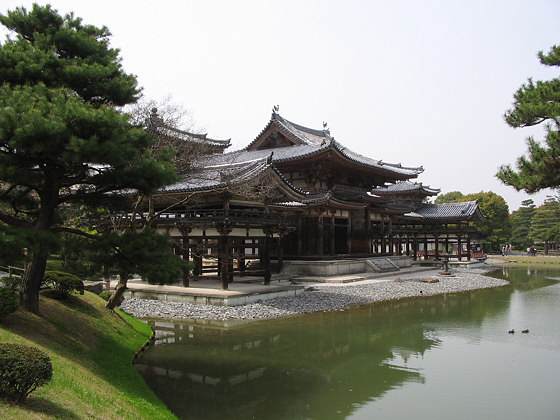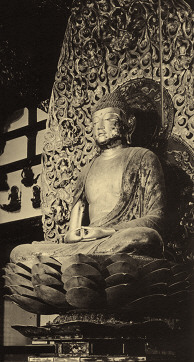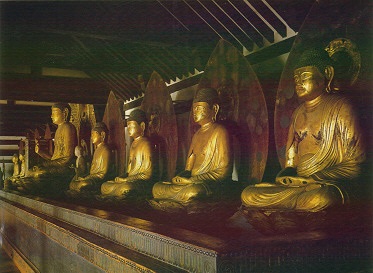Amida Buddha
The cult of Amida, the Buddha of Infinite Light, became popular within the Tendai sect of Japanese Buddhism in the Heian Era (794-1195) because of the approach of the Buddhist "degenerate age" (mappo) due to begin in 1052. Then, it was believed, one could only be saved by the saving grace of Amida. Later, in the Kamakura period, Amidism evolved into the Pure Land (Jodo) sect and became popular with the masses.

The Kamakura Daibutsu (Great Buddha) image of Amida Nyorai.
Murasaki Shikibu, author of The Tale of Genji was herself an Amidist and there are many references to Amida and the Lotus Sutra in the novel. There are also references to Kannon, the Bodhisattva of Compassion, who was believed to help those suffering in this life while Amida saved them in the next. As can be seen in the Tale, many Heian aristocrats took vows and retired to a monastery later in life so they could earn merit by chanting or copying sutras and prepare for entry into Amida's Western Paradise.

Byodo-in Temple houses a famous image of Amida Buddha.

Byodo-in Temple Amida Buddha.
Amida Halls were very popular among the aristocracy in the late Heian period.

The nine Amida Buddha images of Joruriji Temple.